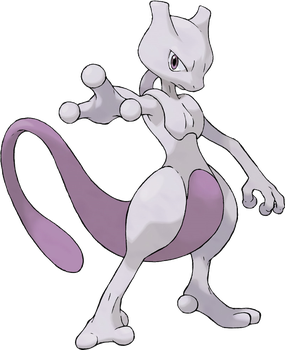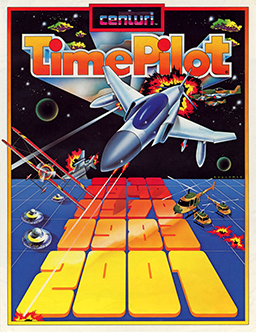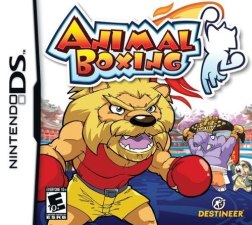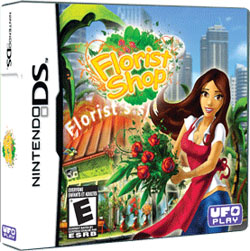
Mewtwo is a Pokémon, a fictional creature from Nintendo and Game Freak. Created by Ken Sugimori, it debuted in the video games Pokémon Red and Blue, and later appeared in subsequent sequels and spin-off titles, such as Pokken Tournament. In the video games, the player can fight and capture Mewtwo in order to subsequently pit it against other Pokémon. The player first learns of Mewtwo late in Pokémon Red and Blue by reading research documents left in a ruined laboratory on Cinnabar Island. Mewtwo is regarded as one of the series' strongest Pokémon, and was the strongest in the original games in terms of base statistic distribution. It is known as the "Genetic Pokémon" and is a Legendary Pokémon, a special group of Pokémon that are very rare and usually very powerful. Mewtwo has also appeared in various animated adaptations of the franchise.

Time Pilot is a multidirectional shooter arcade game designed by Yoshiki Okamoto and released by Konami in 1982. It was distributed in the United States by Centuri, and by Atari Ireland in Europe and the Middle East. While engaging in aerial combat, the player-controlled jet flies across open airspace that scrolls indefinitely in all directions. Each level is themed to a different time period. Home ports for the Atari 2600, MSX, and ColecoVision were released in 1983.

Rescue Rover is a puzzle video game that was developed by id Software and published by Softdisk in 1991. The game was distributed as shareware, with the first 10 levels making up the shareware version, and another 20 levels being present in the registered version. This is one of several games written by id to fulfil their contractual obligation to produce games for Softdisk, where the id founders had been employed. A sequel, Rescue Rover 2, followed.

Cave Story, originally released as Dōkutsu Monogatari, is a 2004 Metroidvania platform-adventure game for Microsoft Windows. It was developed over five years by Japanese independent developer Daisuke "Pixel" Amaya in his free time. Cave Story features 2D platform mechanics and is reminiscent of the games Amaya played in his youth, such as Metroid and Castlevania. After its initial self-published release, the game slowly gained popularity on the internet. It received widespread critical acclaim for many polished aspects of its design, such as its compelling characters, setting, story, and gameplay. Cave Story is considered by many as the quintessential indie game because of its one-person development team and influence on the video gaming world.

Rat Attack! is an arcade-style puzzle game for the Nintendo 64 and PlayStation. It was first released on the PlayStation in 1999, and later on the Nintendo 64 in 2000. Its theme is that of a group of Scratch Cats stopping a rat invasion. It received mixed reviews after its several years in development. The game was slightly altered for its Nintendo 64 release, switching out one of the characters and changing one series of levels.

Teyon is a Polish video games developer, producer and online publisher for all leading platforms including PC, Nintendo Switch, PlayStation 4, Xbox One and mobiles. Founded in 2006, the company has two offices in Poland and one in Tokyo, Japan, with three development teams in total working on delivering games.

The Nintendo DSi is a dual-screen handheld game console released by Nintendo. The console launched in Japan on November 1, 2008, and worldwide beginning in April 2009. It is the third iteration of the Nintendo DS, and its primary market rival is Sony's PlayStation Portable (PSP). The fourth iteration, entitled Nintendo DSi XL, is a larger model that launched in Japan on November 21, 2009, and worldwide beginning in March 2010. Development of the DSi began in late 2006, and the handheld was unveiled during an October 2008 Nintendo conference in Tokyo. Consumer demand convinced Nintendo to produce a slimmer handheld with larger screens than the DS Lite. Consequently, Nintendo removed the Game Boy Advance (GBA) cartridge slot to improve portability without sacrificing durability.

Animal Boxing is a sports video game developed by Spanish studio Akaoni Studio for the Nintendo DS.

Robocalypse is a 2008 real-time strategy video game developed by Russian studio Vogster Entertainment and published by Tecmo for the Nintendo DS handheld video game console. It is the first of the Robocalypse duology and has only been released in North America. The project was led by Anton Kruglyakov and the story was written by Jay Lender and Micah Wright, former writers for animated TV series The Angry Beavers, SpongeBob SquarePants, and Phineas and Ferb. Players utilize the Nintendo DS' unique controls to build and command an army of robots to defeat an army of rogue robots determined to destroy humanity.

Picopict, known as Pictobits in North America and as Pictopict in Australia, is a puzzle video game developed by Skip Ltd. and published by Nintendo for the Nintendo DSi's DSiWare digital distribution service. It is one of seven games released for the DSi's Art Style series of video games. It was announced on January 26, 2009, was released two days later alongside Somnium, another Art Style game, and was released in North America and PAL regions in the same year, on May 18 and May 22 respectively. In Picopict, players use the touchscreen to move coloured blocks into a formation, such as a four-block line or a 2x2 square. This contributes to an 8-bit image, which consist of various Nintendo Entertainment System (NES) characters, such as Mario, Link, and Bowser.

Sujin Taisen: Number Battles, known in North America as Number Battle, is a puzzle/strategy video game developed by Mitchell Corporation for the Nintendo DS handheld video game console. By the end of 2007, Sujin Taisen sold 21,996 copies.

Mighty Flip Champs! is a puzzle-platform game, developed and published by WayForward Technologies for the Nintendo DSi's DSiWare digital download service. It was first announced on March 9, 2009, and was released on June 1, 2009 in North America and on November 27, 2009 in the PAL regions. The developers took inspiration from multiple sources, including the video games Wendy: Every Witch Way and The Legend of Zelda: A Link to the Past. In it, players control Alta, a girl who has to reach a fishman by flipping between areas until she can reach him. Since its release, Mighty Flip Champs! received all-around positive reception, while also being called one of the best video games for the DSiWare service. It is the first game in the Mighty series, and is followed by Mighty Milky Way, Mighty Switch Force!, and Mighty Switch Force! 2.

Mario vs. Donkey Kong: Minis March Again! is a puzzle video game for the Nintendo DSi. Announced at E3 2009, it is the third game in the Mario vs. Donkey Kong series and a follow-up to Mario vs. Donkey Kong 2: March of the Minis. It was released via DSiWare in North America on June 8, 2009, in Europe and Australia on August 21, 2009, and in Japan on October 7, 2009. It is the first DSiWare game to feature a level editor in which players can create custom-made levels and send them to players on other devices via a wireless Internet connection.

The Nintendo DSi system software is a set of updatable firmware versions, and a software frontend on the Nintendo DSi video game console. Updates, which are downloaded via the system's Internet connection, allow Nintendo to add and remove features and software. All updates also include all changes from previous updates.

1001 Crystal Mazes Collection is a logic puzzle game developed by Teyon for the Nintendo DSiWare. It was available in the Nintendo DSi Shop for 500 Nintendo DSi Points.

101 Shark Pets is a 2010 pet caring simulation video game developed by Teyon for the Nintendo DSiWare.

Hubert the Teddy Bear: Winter Games is a sports party game developed by Teyon for the WiiWare. It is available in the WiiWare Shop for 500 Wii Points.

Florist Shop is a puzzle game developed by Teyon for the Nintendo DS. The game is published by UFO Interactive Games in the North America and by Rondomedia in Germany, Switzerland and Austria.


















